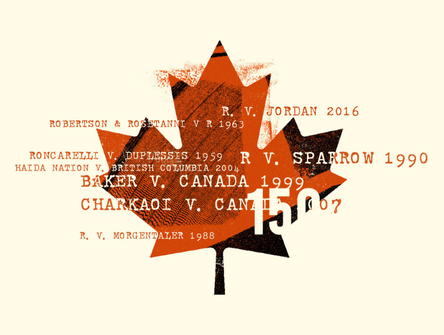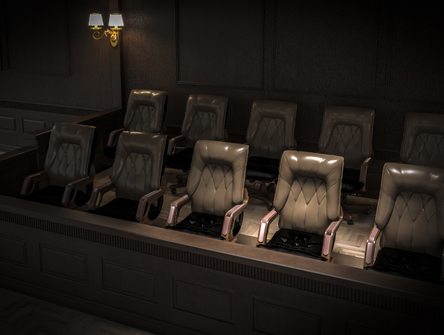Barton jury instructions may raise racial prejudice
The Supreme Court of Canada’s recent ruling is a reminder of the need to go beyond normative ideals of “reconciliation” and challenge foundational beliefs about the justice system for Indigenous people.

The Truth and Reconciliation Commission’s Calls to Action mandate cultural competency and Indigenous law training for law students and legal professionals, and the creation of Indigenous law institutes (Calls to Action #27, 28 and 50). These present critical, perhaps even existential challenges, for legal practice and reasoning in Canada.
The Supreme Court of Canada’s recent decision in R. v. Barton illustrates this challenge. In Barton, the court shouldered specialized jury instructions with the task of reducing prejudice towards Indigenous peoples. At the same time, it reiterated a common belief in the ideal juror, who sets aside his or her prejudices when directed to do so.
Empirical research suggests that setting aside one’s prejudices is an ongoing activity of internally-motivated introspection and self-awareness. Barton jury instructions may have the ironic effect of actually exacerbating racial prejudice and inoculating prejudicial jurors from challenge. To do things differently, we must begin to challenge fundamental assumptions about our justice system, including the hyper-rationalist idealization of the juror.
Out of respect for those who may have experienced sexual violence, this article has separate sections. The “Overview of Reasons” section contains a description of the facts in Barton that may be traumatic for some readers. The main argument of this editorial is located in the “Specialized Jury Instructions and Prejudice Reduction” section and does not contain a description of the events.
Overview of reasons
In the past five years, Indigenous communities and families have lost so many loved ones to violence: Colton Boushie, Tina Fontaine, Barbara Kentner, Jon Styres, Loretta Saunders, Chantel John, and Christine Wood are just a few. Their stories are important. In Barton, the court tells only part of Cindy Gladue’s story, her encounter with Bradley Barton.
On June 21, 2011, Cindy died from a perforation more than 11 centimeters in length that went completely through her vaginal wall. Barton, a long-haul mover, admitted to having sex with Cindy while she was intoxicated. A jury acquitted Barton of both murder and the included charge of manslaughter.
The Supreme Court of Canada held that the trial judge erred in his instructions to the jury. Justice Michael Moldaver, writing for Justices Suzanne Côté, Russell Brown and Malcolm Rowe, held that the trial judge failed to comply with the statutory protections against using a victim’s sexual history for improper purposes. As a result, he failed “to expose and properly address misleading evidence and mistakes of law arising from Mr. Barton’s defence.” On this basis, the majority directed a new trial on the manslaughter charge.
Justices Rosalie Abella and Andromache Karakatsanis, writing also for Chief Justice Richard Wager, agreed, in part, but would have directed a new trial on both the manslaughter and murder charges. The minority found that the trial judge’s errors, including his failure to address racial bias and prejudices against Indigenous women and sex-workers, “permeated the whole of the trial and the jury’s deliberations on both murder and manslaughter.
The court’s findings demonstrate that Barton’s defence relied not only on improper insinuations about Cindy’s sexual history, but also carried an edge of racial prejudice about the worth and value of Indigenous women. Throughout trial, Cindy was referred to as the “native girl,” “native woman,” and “prostitute.” As a defence, Barton testified that he had paid Cindy $60 “for everything” and that she “knew what she was coming for.” Barton’s defence counsel said frankly, “[s]he’s a prostitute, and she’s consenting to sex”, and that there were “no groans of disagreement, in fact, only groans of agreement.”
Like the “pool of blood” Barton left Cindy in, Barton’s defence “flooded the jury” with an “expansive pool of information” that rendered Cindy’s humanity down to that of an object. This was the story Barton and his defence counsel chose to tell about Cindy Gladue.
Specialized jury instructions and prejudice reduction
The court in Barton agreed that there is a systemic problem in the justice system, rooted in colonization. But its insistence that this can be addressed, even partially, through specialized jury instructions is likely incorrect. What’s more, although it appears counterintuitive, it may exacerbate racial bias and prejudice. The case illustrates why it is important for all justice system participants to interrogate well-worn assumptions and customsabout the administration of justice, such as that of the ideal juror.
The majority succinctly recognizes the persistence of racial prejudice in legal reasoning, noting that “it would be naïve to assume that the moment the jurors enter the courtroom, they leave their biases, prejudices, and sympathies behind.” Helpfully as well, the majority directly acknowledges how Canada’s ongoing legacy of colonialism roots racial prejudice in Canadian society and is carried forward in the justice system:
[198] Trials do not take place in a historical, cultural, or social vacuum. Indigenous persons have suffered a long history of colonialism, the effects of which continue to be felt. There is no denying that Indigenous people — and in particular Indigenous women, girls, and sex workers — have endured serious injustices, including high rates of sexual violence against women. The ongoing work of the National Inquiry into Missing and Murdered Indigenous Women and Girls is just one reminder of that painful reality (see Interim Report, Our Women and Girls Are Sacred (2017)).
In response, the court mandates that trial judges provide specific jury instructions “in sexual assault cases where the complainant is an Indigenous woman or girl”. These instructions would inform jurors “that Indigenous people in Canada — and in particular Indigenous women and girls — have been subjected to a long history of colonization and systemic racism, the effects of which continue to be felt” and warn jurors against “a number of stereotypical assumptions about Indigenous women who perform sex work.” The court, however, also tells us that there is no “magic formula.”
Curiously, despite a lengthy discussion on the need for specialized jury instructions, the majority insists on the myth of the ideal juror, who takes his or her charge sincerely and without prejudice. Here, it secures its assumptions about the juror in the administration of justice:
[177] … This is not a form of blind faith; rather, it is a reflection of the well-earned trust and confidence that has been built up over centuries of experience in courtrooms throughout the Commonwealth. The institution of the jury is a fundamental pillar of our criminal justice system. We erode our confidence in this bedrock institution at our own peril.
It is difficult to understand how the majority could conclude that the jury instruction was deficient, and yet also find that the jurors discharged their duty appropriately on Barton’s murder charge.
Although the majority recognizes the limits of jury instructions on systemic change — “by no means a perfect solution to ridding our courts of biases, prejudices, and stereotypes against Indigenous women and girls” — it sees such an approach as a “step forward.”
But it is not clear that specialized jury instructions actually reduce prejudicial reasoning among jurors. Rather, such an approach may have the curious effect of exacerbating prejudice and at the same time inoculating prejudicial jurors against challenge. This is where the court’s insistence on familiar tools – jury instructions – and its “confidence” in jurors, belies the problem it is tasked to deal with.
Over the past decade, legal scholars have started to look to social psychology to better understand the effectiveness of instruments such as jury instructions for reducing prejudice within the justice system. Shari Seidman Diamond, a professor of law and social psychology, describes the “uncertain effect” of informational interventions intended to address implicit bias among jurors. Similarly, Jennifer Elek and Paula Hannaford-Agor report that specialized jury instructions that rely on an “extrinsic motivation to be non-prejudiced (ie., mandates and other authoritarian language typical of jury instructions) may provoke hostility and resistance, failing to reduce and perhaps even exacerbating expressions of prejudice.”
Because of these limitations, they have suggested, along with other scholars, the use of implicit bias tests for screening potential jurors, and the use of jury instructions that clearly explain “the subtle cognitive phenomenon of implicit bias… in a manner that promotes self-awareness” and provides jurors with internal motivation to confront racial prejudice.
This is all to say that initiatives intended to reduce racial bias and prejudice against Indigenous peoples in the Canadian justice system have to go beyond normative ideals of “reconciliation” and consider what is both practical and real. This is not to say that specialized jury instructions might not be effective at reducing prejudice among some jurors; but courts should be cautious in relying on assumptions about the ideal juror when crafting new tools for them to use. Racial prejudice is not a thing that can be rooted out, leaving intact an ideal juror. Acknowledging this, as the majority’s reasons demonstrate, may be difficult.
Barton’s lesson must be carried forward. Implementing the TRC’s Calls requires critically interrogating the way that things are done. It may mean looking to other disciplines, such as social psychology, to understand the effectiveness of cultural competency training and other approaches. It means that lawyers familiarize themselves with literature in other disciplines, which can shed insight on what works and what doesn’t in the justice system. It also requires deep introspection on the part of all participants on the meaning of the rule of law and the administration of justice, and the effects of racial prejudice on the marginalization and exclusion of Indigenous peoples in Canada’s justice system.


